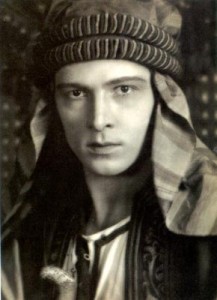Racial Segregation And Latino Film Stereotypes
 An interesting interview appeared in A Latino Point of View in Today’s World this week about why and how Latinos and Latinas were stereotyped in early Hollywood films. By “early” we’re talking about the days of Ramon Novarro, Gilbert Roland, Antonio Moreno, Beatriz and Vera Michelena, the earliest Latino star Myrtle Gonzalez, Dolores del Rio, Lupe Velez, Rudolph Valentino, George Hernandez, Joe Dominguez, Julian Rivero and Pedro de Cordoba.
An interesting interview appeared in A Latino Point of View in Today’s World this week about why and how Latinos and Latinas were stereotyped in early Hollywood films. By “early” we’re talking about the days of Ramon Novarro, Gilbert Roland, Antonio Moreno, Beatriz and Vera Michelena, the earliest Latino star Myrtle Gonzalez, Dolores del Rio, Lupe Velez, Rudolph Valentino, George Hernandez, Joe Dominguez, Julian Rivero and Pedro de Cordoba.
The interview was with Stephen Sariñana-Lampson, a Los Angeles-based photographer and documentary filmmaker. Some highlights from the interview:
[Photo Courtesy Wikipedia]During the Silent Film era in Hollywood – from about 1912 to the late 1920′s – Latinos were involved in filmmaking as actors, directors, cinematographers and behind the scenes artists and workers.
Generally, the most common stereotypical portrayals of Latinos during the American silent film era tended to fall into 3 main character types… The “Greaser”, the “Latin Lover” and for women, the “Dark Lady” or “Seductress”.
Opinion pieces were written in the Mexican press protesting these clearly racist and offensive images on screen and there were instances where audiences actually walked out of theaters in disgust. This backlash reached a crescendo in 1922 when the Mexican government banned the showing of any offensive movie created by any film company. A similar ban was put into effect that same year in Panama. With this threat of a ban on the moneymaking Latin American export market and its potential negative economic impact, the film industry slowly began to distance itself from some of its more offensive character models. One method of deflecting a country’s charges of promoting negative stereotypes in westerns by Hollywood was to provide the greaser-like villain with an origin from a fictionalized unknown country.

